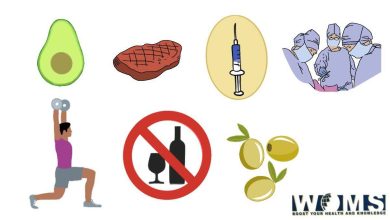The Golden Health Benefits of Ashwagandha

What is ashwagandha?
Ashwagandha is an Indian small shrub that is evergreen and mainly grows in the Middle East parts of India and some parts of Africa. The root and the berry of ashwagandha are used as the medicine for anxiety disorders. It has various other benefits to one’s health too. Ashwagandha, also known botanically as Withania Somnifera, is a medicinal plant that has been used primarily in Ayurvedic medicine for over 3,000 years.
It’s a little shrub with yellow flowers that grows in India and North Africa and belongs to the nightshade family. Because of its distinct odor, Ashwagandha is known as “horse scent.” (It has a pungent, barn-like, earthy scent, but it doesn’t smell like a horse.) Other names for Ashwagandha include Indian ginseng and winter cherry, to mention a few. This herb has a bitter flavor.
How does ashwagandha work?
This Indian herbal shrub contains chemicals that help to calm the brain, reducing inflammation, lower blood pressure, and also alter the immune system. It’s an adaptogen, which means it can assist your body cope with stress. Indian ginseng has a chemical that has a strongest calming effect than a sedative and anti-anxiety medication drug lorazepam.
A study was conducted on mice. The study, 2000 suggests that ashwagandha has a comparable effect to reduce anxiety with lorazepam. Suggesting an effective shrub for reducing anxiety. There was a human study in 2019, which researchers found that taking 240 mg (milligrams) of ashwagandha in a daily dose reduces people’s stress levels when it was compared with a placebo.
Placebo is an inactive treatment that may be available in form of pills, tablets, or injections. It is sometimes called a sugar pill. This study also includes reducing the levels of a stress hormone which is cortisol. Another trial in humans done the same year found that either 250 mg or 600 mg of Indian ginseng per day reduced self-reported stress levels and improved mood. Cortisone level too.
Health Benefits of Ashwagandha
Now let’s take a look at the benefits of the ashwagandha.
1. It Helps To Alleviate Depression Symptoms
Several studies suggest that ashwagandha may help reduce depression, while more research is needed. Those who consumed 600 mg of high-concentration Indian ginseng extract daily performed better. For 60 days showed a 79 percent reduction in severe depression, according to a 60-day trial of 64 stressed persons. Compared to a 10% increase in the placebo group. On the other hand, depression history was observed from only one person. Consequently, the importance of the findings is questionable.
2. It Helps To Boost Testosterone Levels and Increase Fertility in Men
In a study from 2010, Ashwagandha was used to treat 75 infertile men. As a result, there was an increase in sperm count and motility, as well as testosterone levels.
Another study found that Indian ginseng not only enhanced sperm quality, but that 14 percent of men are female partners became pregnant after three months of treatment.
3. It Increases Muscle Mass and Strength
Ashwagandha means “horse smell” in Sanskrit for two reasons: it has a distinct aroma and it makes you powerful like a horse! Indian ginseng has been demonstrated in studies to enhance muscle growth and size, particularly in men.
4. It can support adrenal function
The endocrine system includes the adrenal glands. These two glands, located on each kidney are in charge of manufacturing-specific hormones. The most common are cortisol and adrenaline, which are released in response to stress. Excessive stress on your body causes adrenal exhaustion. Low energy expenditure, mental fog, and sugar cravings are all signs of adrenal fatigue.
It’s no surprise that ashwagandha can aid with adrenal function because it’s a natural stress reducer.
5. For Anxiety Disorders
According to the Medical Expenditure Panel’s 2013 survey, more than one in every six Americans uses psychiatric medicine. (The anti-anxiety medicine Xanax is the most widely prescribed.) But what if there was a non-prescription natural anti-anxiety remedy?
There is one, and it’s called Ashwagandha. Participants who took ashwagandha root extract for six weeks reported an 88 percent reduction in anxiety.
Furthermore, unlike anti-anxiety medications, which have negative side effects, Indian ginseng has little or no negative side effects.
6. It can aid thyroid health.
Ashwagandha might be a natural cure if you’ve been diagnosed with Hashimoto’s disease or have an underactive thyroid. In Ayurveda, ashwagandha is used to treat thyroid issues, and the researchers decided to put this theory to the test by giving participants 600 mg of ashwagandha root extract over eight weeks. According to the findings published in the “Journal of Alternative and Complementary Medicine,” Indian ginseng dramatically Thyroid-stimulating hormone (TSH) and thyroxine levels in the blood have increased.
These researchers concluded that this adaptogen could be advantageous to hypothyroidism sufferers.
Because ashwagandha has been shown to improve thyroid function in studies, it may not be suited for persons who have an overactive thyroid.
7. It can help reduce stress
70% of adults say they feel stressed or anxious daily.
While there is no way to eliminate all stress, ashwagandha can assist! Ashwagandha is an adaptogen, which means it can assist your body in dealing with stress.
64 people with a history of chronic stress were given either two 300 mg capsules of highly concentrated ashwagandha root extract or a placebo for 60 days.
Those who took winter cherry saw a 69 percent reduction in stress and sleeplessness. Cortisol, generally known as the stress hormone, is produced in the adrenal glands and can be reduced by ashwagandha. Cortisol levels that are continuously (or over a long period) increased can lead to abdominal fat storage. However, studies have indicated that ashwagandha can lower cortisol levels, with one study showing that cortisol levels were reduced by nearly a third!
8. Treating Insomnia
For generations, Ashwagandha has been advised for a restful night’s sleep.
Withania Somnifera is known as Somnifera, which means “sleep-inducing” in Latin.
Trimethylene glycol, found in the leaves of the winter cherry plant, is an active component that promotes sleep induction.
How to Take Ashwagandha
Ashwagandha is commonly sold in tablet or capsule form due to its harsh taste and pungent odor. It’s also available as a powder. The flavor and smell are covered by the addition of 5 additional superfoods, including turmeric, making it a much more delightful experience!

While ashwagandha is generally considered safe, it should not be taken by pregnant women. Before taking ashwagandha, consult your doctor if you are taking thyroid medication.
Contraindications in the Use of Ashwagandha
- Stomach ulcer: It is advised not to take Ashwagandha if you have a stomach ulcer as it can irritate your GI tract.
- In pregnancy: It is not advised to take during pregnancy because it might cause miscarriage. Though sufficient research has not been done. So, it is better to avoid breastfeeding and pregnancy.
- Thyroid disorders: It increases thyroid levels so, if you have thyroid disorders it is good to avoid them.
- Surgery: If you are going to have surgery the medical personnel will advise you to discontinue it 2 weeks before the surgery.
Side effects of ashwagandha
If you are unsure about taking the ashwagandha, you should always discuss it with a doctor. Too high a dose can lead to stomach pain or diarrhea. Possible interactions with medication should be discussed with your family doctor.
Furthermore, the dietary supplement is no substitute for a visit to the doctor if permanent symptoms are evident. So far, there are few or no studies that have investigated the consumption of ashwagandha extract during pregnancy or in children. For this reason, administration to pregnant women and children is not recommended. Following studies, it was also advised against taking the similar medicinal plant ginseng during pregnancy, as it could increase the risk of miscarriages. Previous side effects of sleeping berries in adults are not yet known.
Summary
Ashwagandha is an important herb present in ayurvedic medicine. It is also one of the safest herbal treatments. Some studies suggest winter cherry having a wide range of health benefits. Mainly it is used for anxiety disorder and also for improving arthritis.
It is suggested that pregnant women with pre-existing health conditions must consult a health professional before using it.
FAQs:
How long does it take for ashwagandha to work?
It takes from days to about a week for the ashwagandha to show its effect on the people.
In a study conducted on 60 people who took 30 mg of ashwagandha on daily basis, the effects of ashwagandha were seen on them for about 10 weeks.
When is the best time to take ashwagandha?
Ashwagandha can be taken either in the morning or night as your wish. Since it enhances better sleep so some people prefer to take it at night after having their food too. But while choosing the best time take the time in which you will take Ashwagandha in more consistently.
What is ashwagandha good for?
Ashwagandha has a wide range of health benefits. It is good for reducing anxiety and stress. Similarly, it is good for fighting depression and helps to boost testosterone in males,s and helps to enhance brain function. If you take it as a supplement then it can boost your health and quality of health.
How long does ashwagandha stay in your system?
Ashwagandha contains both water-soluble and fat-soluble compounds. The water-soluble compounds in the ashwagandha will stay for 2-3 days then it will leave our body while the fat-soluble compound in it can remain for up to a month




